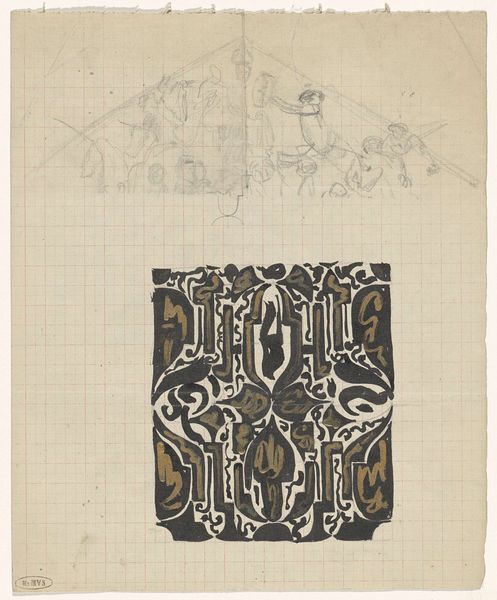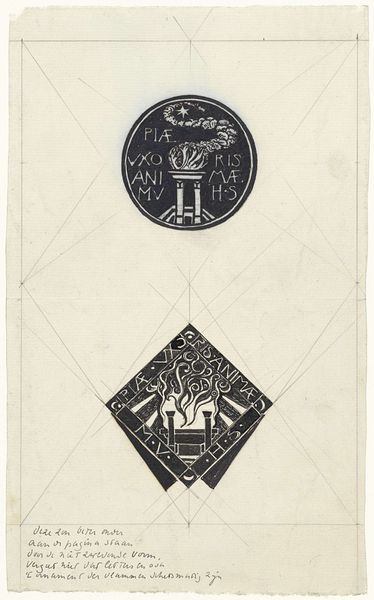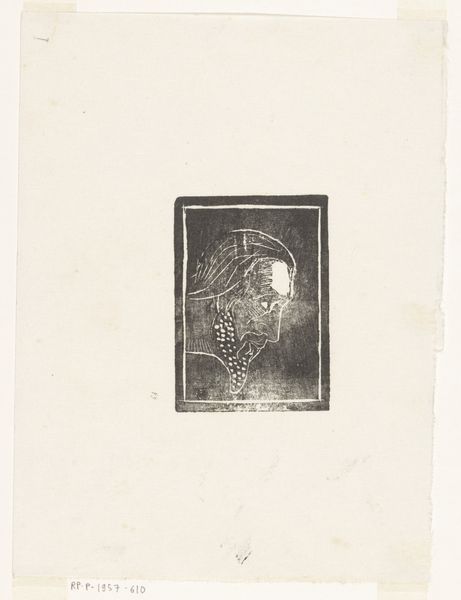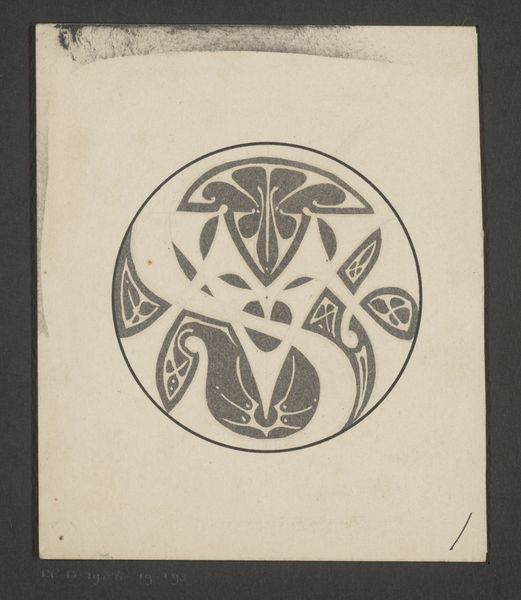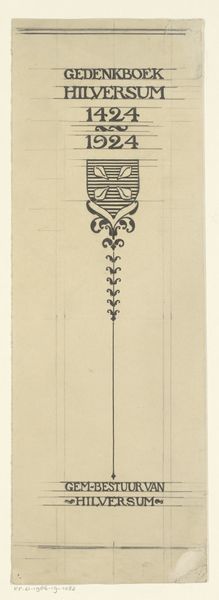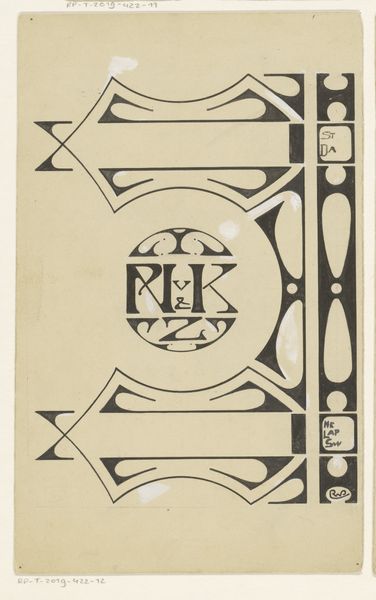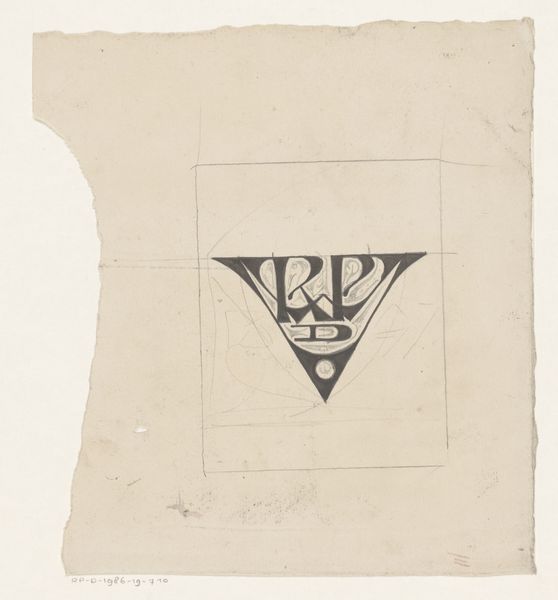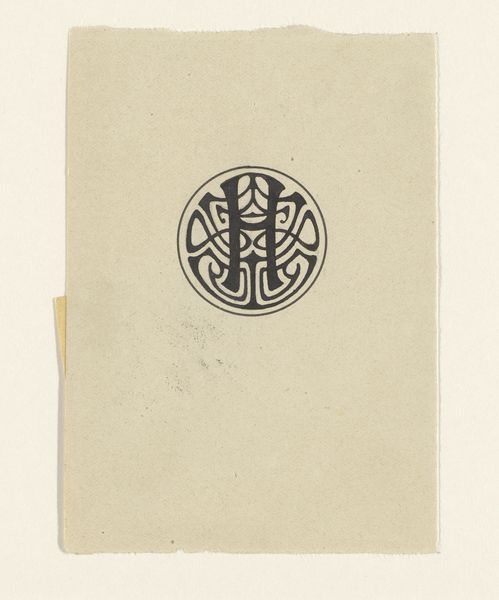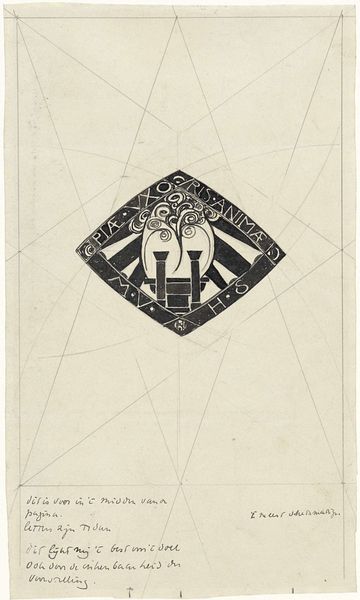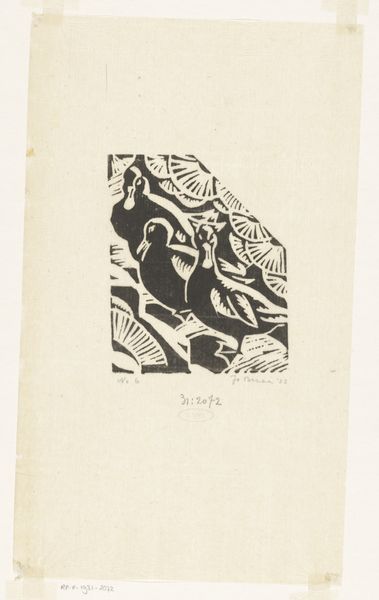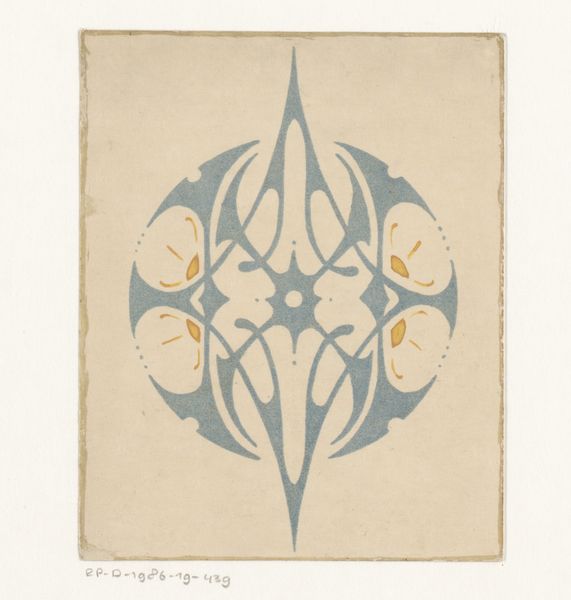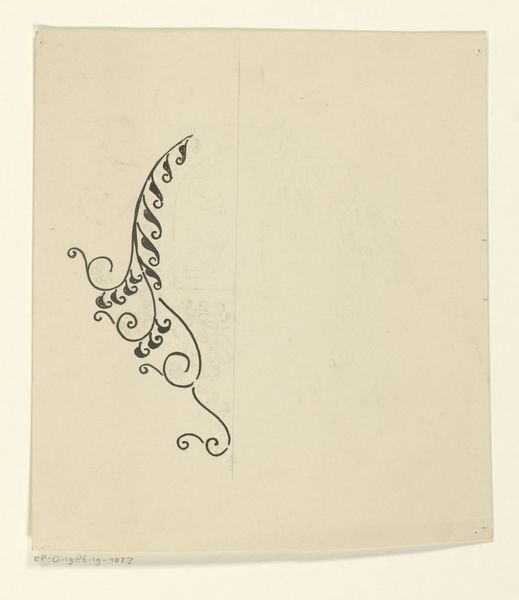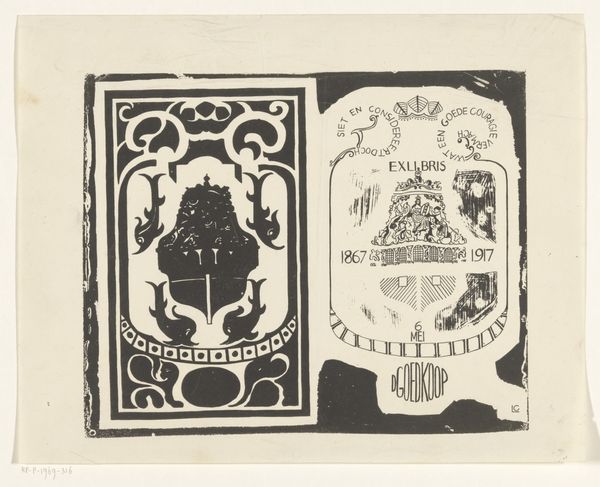
Vignet ter herinnering aan Mary Vincentia Huizinga-Schorer 1919
0:00
0:00
richardnicolausrolandholst
Rijksmuseum
drawing, graphic-art, print, stencil
#
drawing
#
graphic-art
#
reduced colour palette
# print
#
stencil
#
form
#
geometric
#
letter design
#
embossed
#
line
#
symbolism
#
monochrome
Dimensions: height 149 mm, width 136 mm
Copyright: Rijks Museum: Open Domain
Curator: This is "Vignet ter herinnering aan Mary Vincentia Huizinga-Schorer," a striking stencil print by Richard Nicolaüs Roland Holst, created in 1919. Editor: Wow, that’s intense! At first glance, it feels almost like a stylized emblem, somber yet… somehow… invigorating. Like a gothic logo for a really niche tea brand. Curator: I see what you mean about the logo-like quality. Its symbolism resonates with broader artistic and social currents of the early 20th century. We should understand the personal and societal context—Mary Vincentia Huizinga-Schorer was clearly someone Holst admired. It blends graphic art, letter design and geometric form with elements of embossed, stylized design, characteristic of the period’s artistic movements, like Symbolism, grappling with death and remembrance in a post-war context. Editor: Symbolism is totally the right word! The monochromatic palette—stark black on, presumably, paper—gives it this incredibly austere feel. I love how the shapes interplay. Is that steam? And pillars, framing the whole…idea, or sentiment, maybe? Curator: Precisely. Holst’s technique is worth noting; the reduction of color directs the viewer’s gaze toward form and pattern, inviting interpretation rooted in symbolism. You also picked up the monochrome aspects right away. These are all designed to elicit an emotional response. Editor: Emotional, absolutely. Even without knowing the history, you sense it. The initials surrounding the core imagery suggest personal significance—almost like a secret code meant only for those in the know. It pulls you in, which creates a relationship with art and mourning on an intimate level. Curator: Absolutely, that connection, situated within cultural norms about remembrance and artistic styles of the time period helps make this more impactful to a diverse audience. Consider also, the geometric pattern within and around the borders - very intentionally constructed! Editor: You know what? Now I feel a pang of sympathy for poor Mary Vincentia—or for those she left behind. The piece manages to be both intimate and monumental, if that makes any sense. What a beautiful paradox! I dig it, big time! Curator: Roland Holst provides a framework for discussing turn-of-the-century loss while giving space to reflect on themes of collective identity and sorrow during global disruption. It becomes a way of asking ourselves how we want to engage with remembrance. Editor: A poignant conversation starter! Holst captured the mood exquisitely. Now I have got the feelings!
Comments
No comments
Be the first to comment and join the conversation on the ultimate creative platform.
